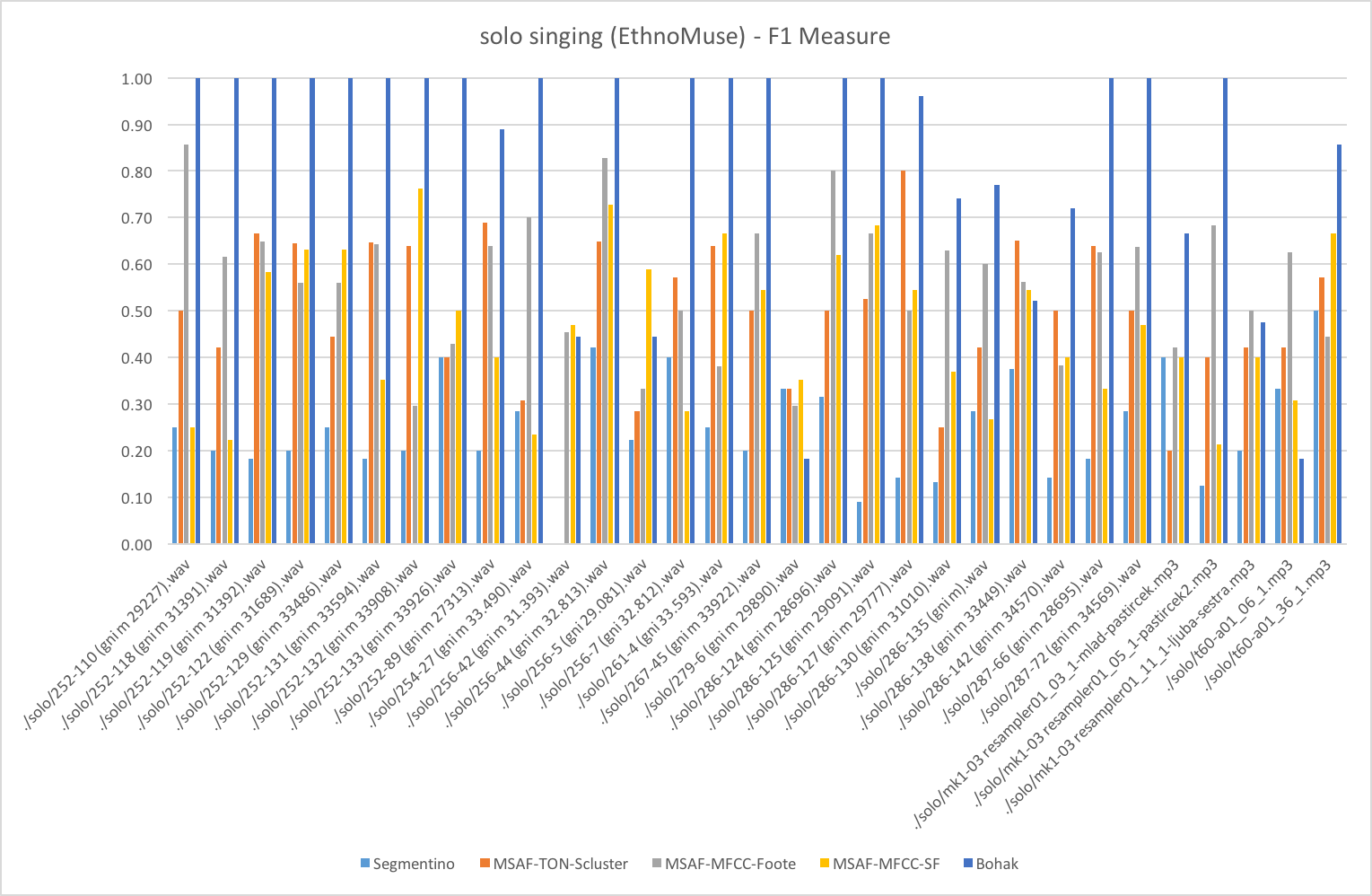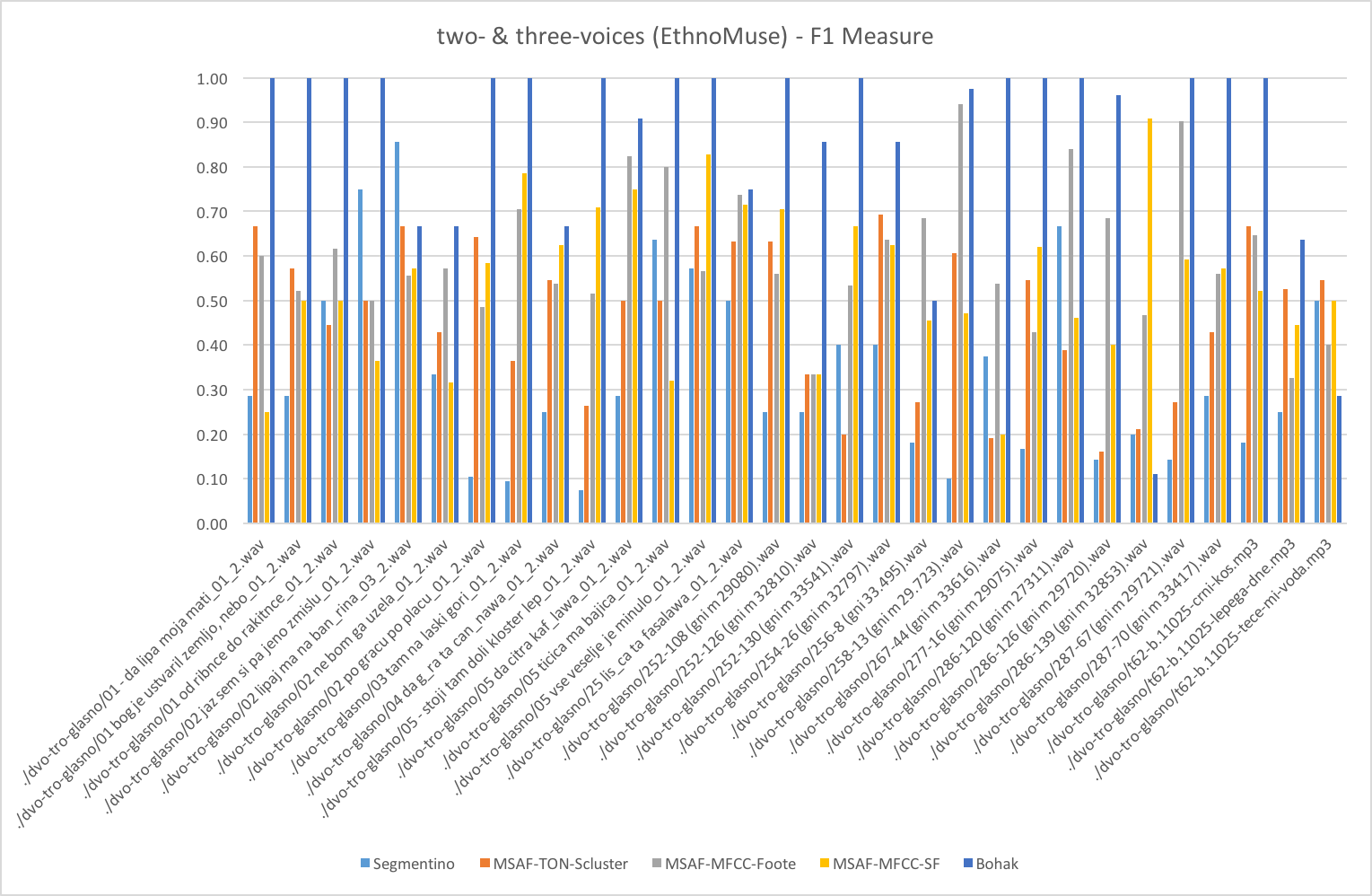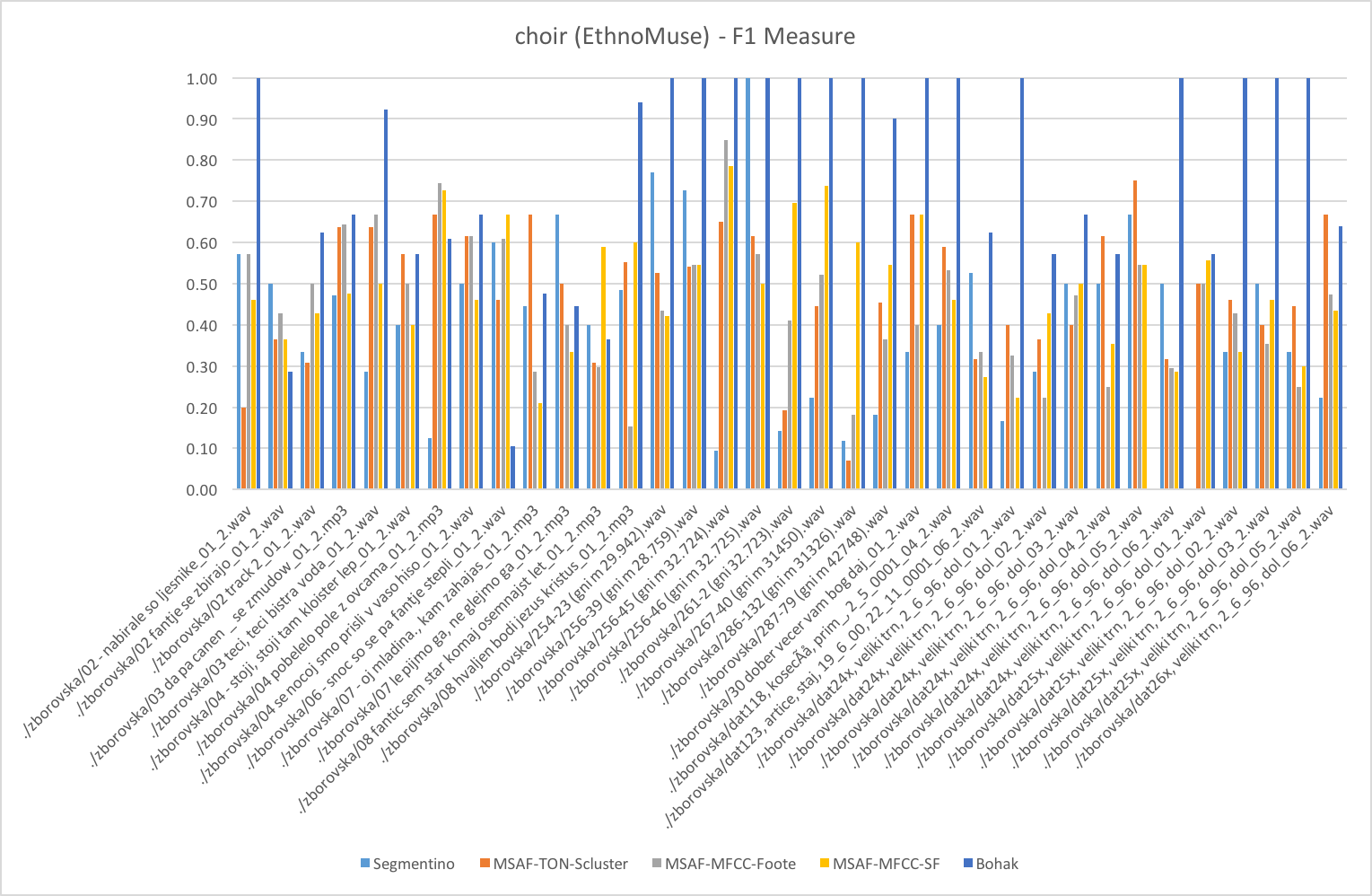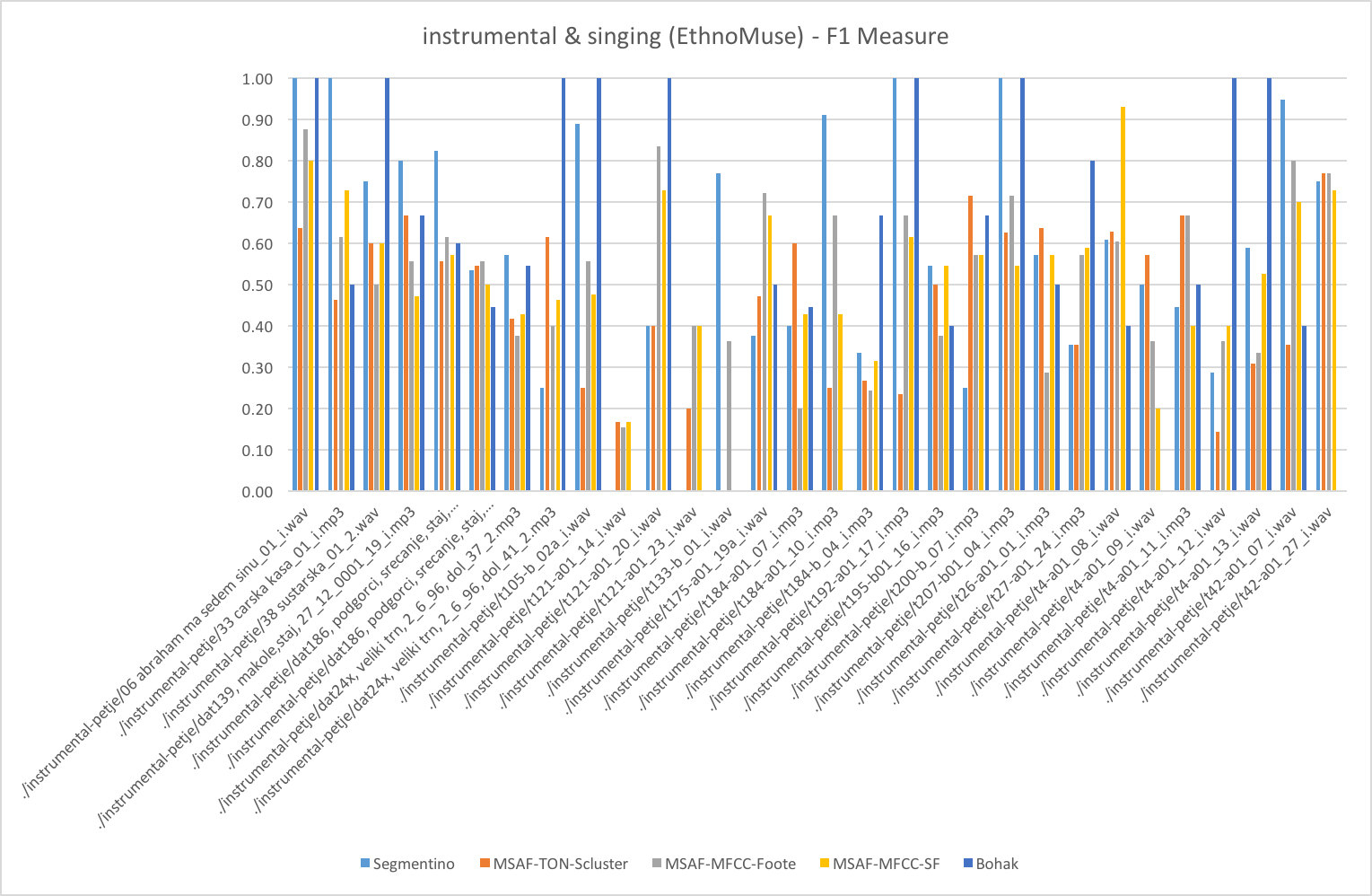The paper presents a novel method for automatic segmentation of folk music field recordings. The method is based on a distance measure that uses dynamic time warping to cope with tempo variations and a dynamic programming approach to handle pitch drifting for finding similarities and estimating the length of repeating segment. A probabilistic framework based on HMM is used to find segment boundaries, searching for an optimal match between the expected segment length, between-segment similarities, and likely locations of segment beginnings. Evaluation of several current state-of-the-art approaches for segmentation of commercial music is presented and their weaknesses when dealing with folk music exposed, such as intolerance to pitch drift and variable tempo. The proposed method is evaluated and its performance analyzed on a collection of 206 folk songs of different ensemble types: solo, two- and three-voiced, choir, instrumental and instrumental with singing. It outperforms current commercial music segmentation methods for non-instrumental music and is on par with the best for instrumental recordings. The method is also comparable to a more specialized method for segmentation of solo singing folk music recordings.
365 files are available from the Segmentation database are available in the ZIP file above.
47 files are part of OGL collection at Dutch Song Database.





